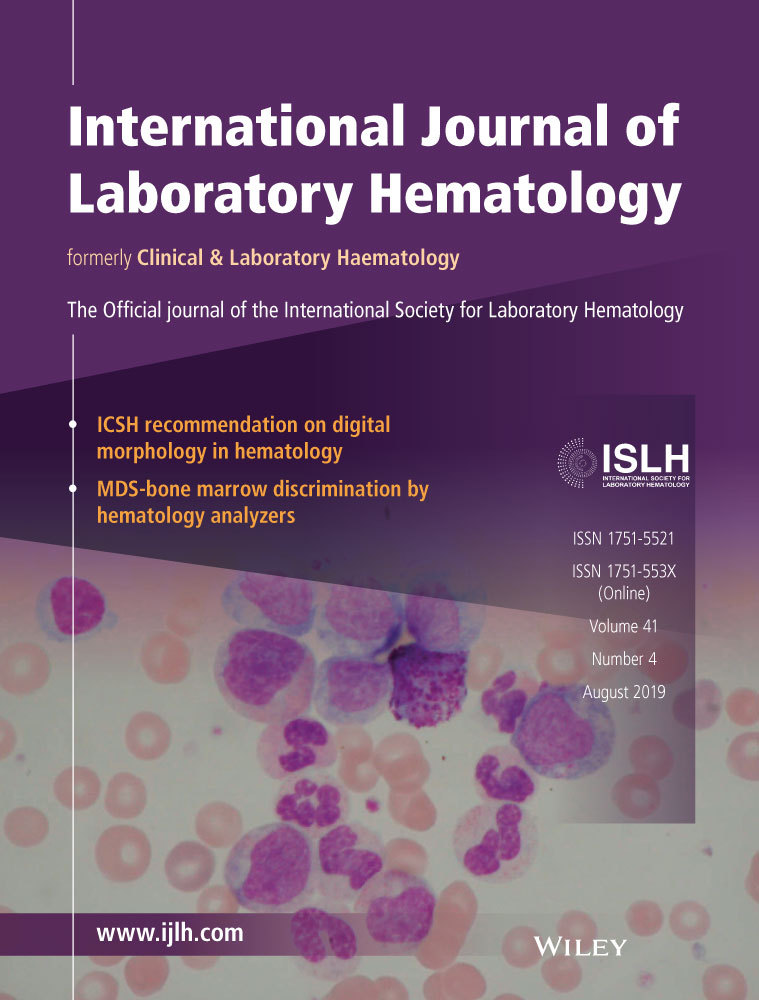Cytogenetics and associated mutation profile in patients with acute monocytic leukemia
Abstract
Introduction
Cytogenetics and molecular testings for disease classifying and prognosis estimation are becoming routine in clinical practice. However, the molecular characteristics of acute monocytic leukemia (AML-M5) remain unclear. The aim of this study was to investigate the association between karyotypes and gene mutations, especially in AML-M5 patients with 11q23/KMT2A (MLL) rearrangement and normal karyotype.
Methods
A total of 126 de novo AML-M5 patients were screened for mutations in the 51 genes known or suspected to have a role in myeloid malignancies or in monocytic differentiation using next-generation sequencing (NGS). Chromosome karyotype analysis was performed by R-banding method and further confirmed either by fluorescence in situ hybridization (FISH) and/or by multiple reverse transcription polymerase chain reaction (multiple RT-PCR).
Results
Of the 126 patients, one or more mutations were detected in 83.3% patients. FLT3-ITD and NRAS had the highest mutation frequency, followed by NPM1, DNMT3A, TET2, KRAS, and RUNX1. We also identified a significant difference in mutational spectrums between KMT2A-rearranged (KMT2Ar) patients and normal karyotype (NK) patients, as reflected in the average number of gene mutations per patient (1.66 vs 2.46), and in the frequencies of commonly mutated genes (FLT3-ITD: 6% vs 43.5%; NPM1: 0% vs 43.5%; RUNX1: 2.0% vs 15.2%; DNMT3A: 4% vs 26.1%; KRAS: 24.0% vs 4.35%). Patients harboring ≥3 mutations showed much lower complete remission rate than that with double mutations (P = 0.043) in high-risk group.
Conclusion
There was a significantly different mutation profile between KMT2Ar-patients and NK patients. Our research provided new insight into the molecular characteristics of AML-M5.
CONFLICT OF INTEREST
The authors have no competing interests.




